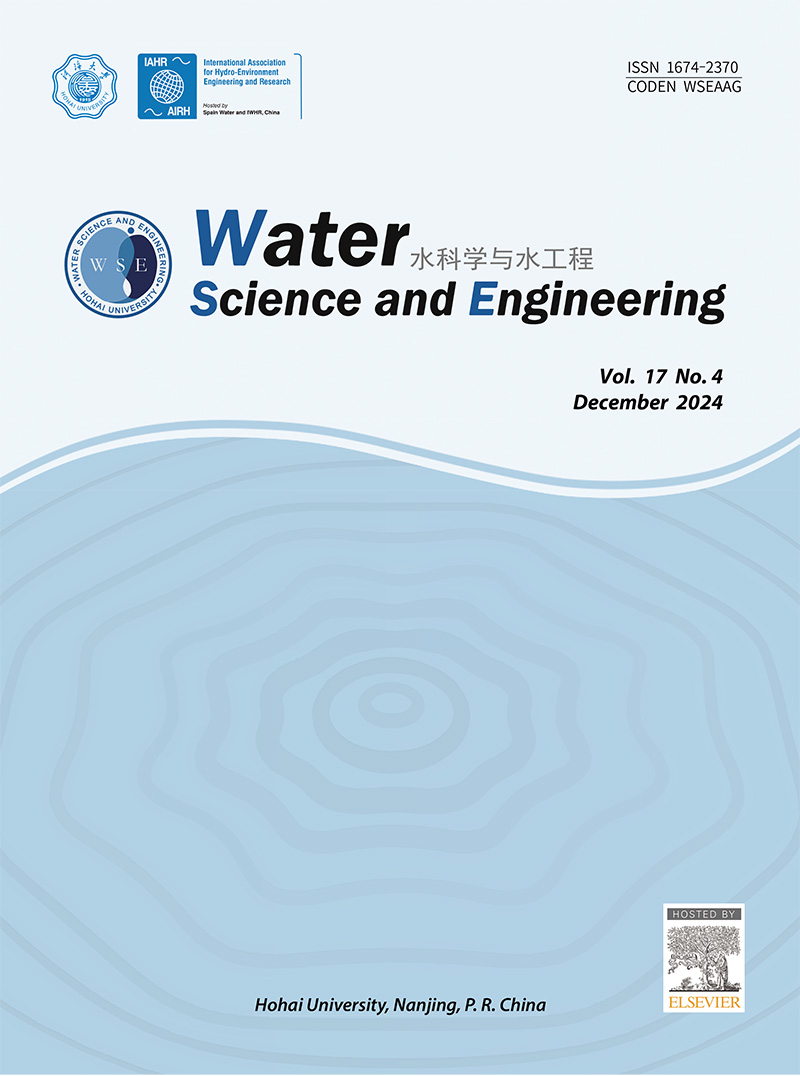Influence of breach parameter models on hazard classification of off-stream reservoirs
IF 4.3
Q1 WATER RESOURCES
引用次数: 0
Abstract
The classification of dams or off-stream reservoirs concerning potential hazards in the event of failure often involves the use of two-dimensional hydraulic models for computing floodwave effects. These models necessitate defining breach geometry and formation time, for which various parametric models have been proposed. These models yield different values for average breach width, time of failure, and consequently, peak flows, as demonstrated by several researchers. This study analyzed the effect of selecting a breach parametric model on the hydraulic variables, potential damages, and hazard classification of structures. Three common parametric models were compared using a set of synthetic cases and a real off-stream reservoir. Results indicated significant effects of model choice. Material erodibility exerted a significant impact, surpassing that of failure mode. Other factors, such as the Manning coefficient, significantly affected the results. Utilizing an inadequate model or lacking information on dike material can lead to overly conservative or underestimated outcomes, thereby affecting hazard classification.
破损参数模型对离流水库危险性分类的影响
大坝或下游水库的分类涉及到在发生破坏时的潜在危险,通常涉及到使用二维水力模型来计算洪波效应。这些模型需要定义裂缝的几何形状和形成时间,为此提出了各种参数模型。正如几位研究者所证明的那样,这些模型对平均缺口宽度、破坏时间以及峰值流量产生了不同的值。分析了裂缝参数模型的选择对结构水力变量、潜在损伤和危险分类的影响。通过一组综合实例和一个实际离河水库,对三种常用参数模型进行了比较。结果表明,模型选择的影响显著。材料可蚀性的影响大于破坏模式的影响。其他因素,如曼宁系数,对结果有显著影响。利用不充分的模型或缺乏堤防材料信息可能导致结果过于保守或低估,从而影响危险分类。
本文章由计算机程序翻译,如有差异,请以英文原文为准。
求助全文
约1分钟内获得全文
求助全文
来源期刊

Water science and engineering
WATER RESOURCES-
CiteScore
6.60
自引率
5.00%
发文量
573
审稿时长
50 weeks
期刊介绍:
Water Science and Engineering journal is an international, peer-reviewed research publication covering new concepts, theories, methods, and techniques related to water issues. The journal aims to publish research that helps advance the theoretical and practical understanding of water resources, aquatic environment, aquatic ecology, and water engineering, with emphases placed on the innovation and applicability of science and technology in large-scale hydropower project construction, large river and lake regulation, inter-basin water transfer, hydroelectric energy development, ecological restoration, the development of new materials, and sustainable utilization of water resources.
 求助内容:
求助内容: 应助结果提醒方式:
应助结果提醒方式:


